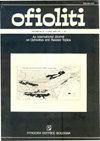Preliminary geochemical data of the mafic rocks from the Ovacik and Pülümür Ophiolite Zone (Eastern Anatolia, Turkey): implications for the geodynamic evolution of the Northern Neotethyan Ocean
IF 1.3
4区 地球科学
Q2 GEOLOGY
引用次数: 8
Abstract
The Izmir-Ankara-Erzincan-Sevan-Akera Suture Belt (IAESASB) stretches from the Aegean Sea to the Lesser Caucasus and includes the remnants of the Northern Neotethys. The Ovacik and Pulumur Ophiolite Zone (OPOZ) to the north of Tunceli is less-known members of this belt. In this study, preliminary geochemical data from the basaltic and gabbroic rocks from this zone are presented to provide the first insights into their geochemistry. The studied mafic samples exhibit geochemical characteristics of an intra-oceanic subduction system. Three types of samples were differentiated on the basis of their major, trace and rare earth element (REE) geochemistry. The first one is boninitic and displays highly depleted elemental pattern (relative to N-MORB) and concave REE profile. The second type is akin to back-arc basin basalts (BABB) and generally reflects normal-MORB (NMORB)-like high field strength element (HFSE) patterns coupled with negative Nb anomalies. The last type is relatively similar to the BABB-type, but it lacks the marked negative anomaly in Nb and can be ascribed to the mid-ocean ridge basalt (MORB). The overall geochemical features suggest that these mafic rocks were predominantly generated in a supra-subduction setting from a subduction-modified mantle source. It is further suggested that the Ovacik and Pulumur Ophiolite Zone was formed in an oceanic arc-basin system within the northward subducting Northern Neotethys.Ovacik和Pülümür蛇绿岩带(土耳其安纳托利亚东部)镁铁质岩石的初步地球化学数据:对新特提斯洋北部地球动力学演化的影响
伊兹密尔-安卡拉-埃尔津坎-塞万-阿克拉缝合带(IAESASB)从爱琴海一直延伸到小高加索,包括北新特提斯的残余。通塞利北部的Ovacik和Pulumur蛇绿岩带(OPOZ)是该带中鲜为人知的成员。在这项研究中,提供了该地区玄武岩和辉长岩的初步地球化学数据,以首次了解其地球化学。所研究的镁铁质样品显示出洋内俯冲系统的地球化学特征。根据主要元素、微量元素和稀土元素的地球化学特征,对三类样品进行了区分。第一个是玻安岩,显示出高度贫化的元素模式(相对于N-MORB)和凹陷的REE剖面。第二种类型类似于弧后盆地玄武岩(BABB),通常反映出与负Nb异常相结合的正常MORB(NMORB)样高场强元素(HFSE)模式。最后一种类型与BABB类型相对相似,但其Nb缺乏明显的负异常,可归因于大洋中脊玄武岩(MORB)。总体地球化学特征表明,这些镁铁质岩石主要产生于俯冲改造地幔源的超俯冲环境中。进一步认为Ovacik和Pulumur蛇绿岩带形成于新特提斯北部向北俯冲的弧盆系统中。
本文章由计算机程序翻译,如有差异,请以英文原文为准。
求助全文
约1分钟内获得全文
求助全文
来源期刊

Ofioliti
地学-地质学
CiteScore
2.40
自引率
7.70%
发文量
1
期刊介绍:
Since 1976, Ofioliti provides an international forum for original contributions and reviews in the field of the geodynamics, petrology, geochemistry, biostratigraphy, stratigraphy, tectonics and paleogeography applied to ophiolitic terrains and modern oceanic lithosphere, including their sedimentary cover. Studies of topics such as geodynamics of the mantle, the evolution of orogens including ophiolites and paleoceanography are also welcome
 求助内容:
求助内容: 应助结果提醒方式:
应助结果提醒方式:


